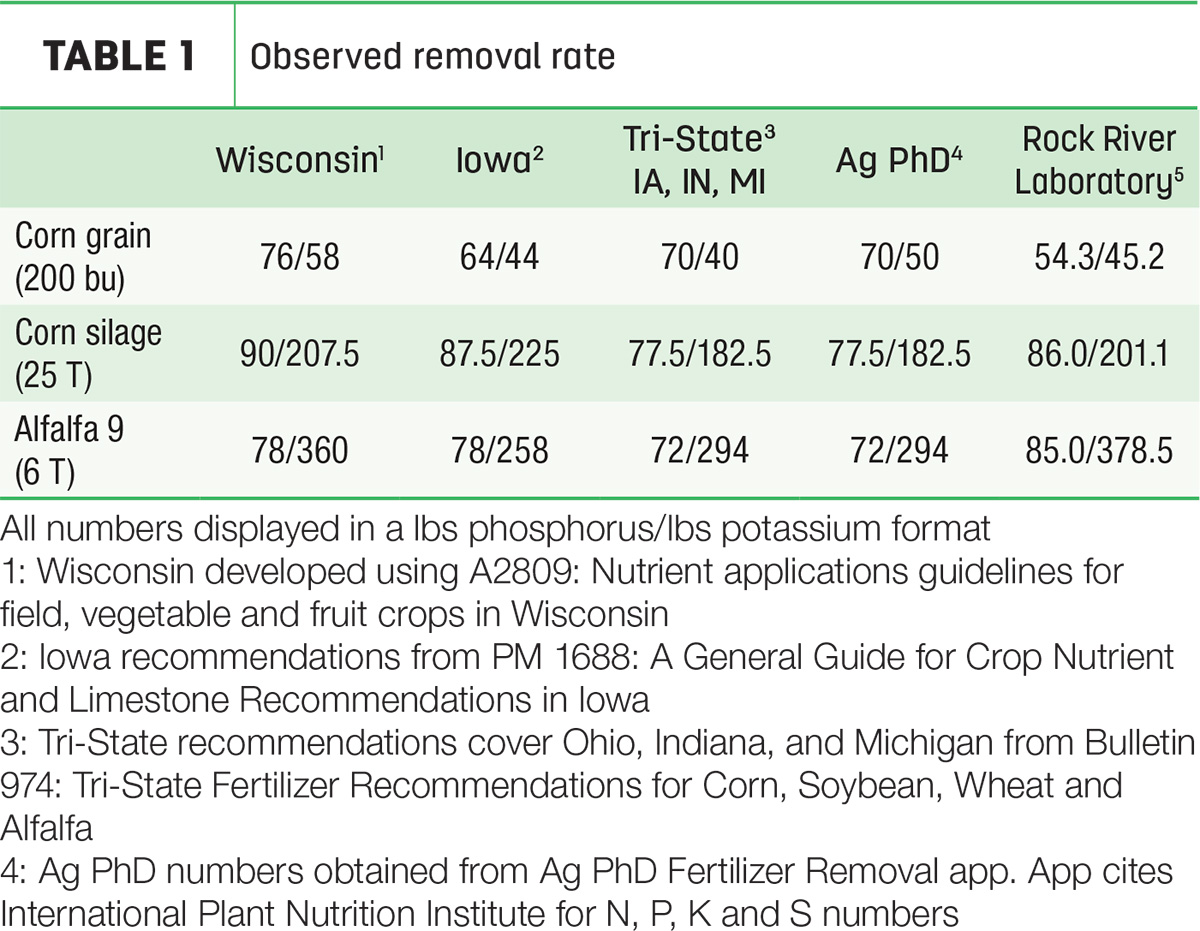The fertility of samples arriving at soil analysis laboratories throughout the nation has been dropping. Many theories exist about why this is occurring. With rising input prices, are growers not keeping up with maintenance applications? After a century of agricultural production, are fertility reserves being depleted? Are university nutrient removal calculations no longer relevant with modern hybrids and their intense yield removals? The latter tends to become an easy scapegoat when it comes to the “why” of weakening fertility values.
Rock River Laboratory is in a unique position to evaluate this yield removal hypothesis. As one of the largest agronomic and nutrition testing laboratories in the U.S., we have a tremendous amount of aggregate data available for comparisons and research. The referenced aggregate data has been combined and broken down into each individual feed type. Once feeds have been broken down by type, the nutrient content of each feed can be evaluated. But when laboratory locations exist all over the world, the region could play a role in each crop’s nutrient content. This warrants yet another breakdown of forage types by continent, followed by a breakdown of states by region.
These tight dissections of the forages coming through a lab gives an excellent look at the overall nutrient composition of major feed types broken down by region. These real-world values provide an outstanding double check of university crop removal estimates.
Nutrient removal estimates
For Table 1, samples were pulled from all Midwest Rock River Laboratory sites. There are around 50,000 samples for both corn silage and alfalfa and almost 10,000 corn grain samples in this comparison. A deep dive into the published literature behind the university recommendations may yield a look at the number of samples behind their numbers, but it is almost certain to be far less than the sample size in our database.

The most pertinent finding of Table 1 is: These numbers are relatively close. The fear that university removal rates are lagging greatly behind is not of major concern. The bad news is: A small difference in yearly removal rates can lead to a big fertilizer deficit over time.
The other positive that can be gleaned from the above comparison is: University removal rates trend slightly higher than the laboratory-measured average removal rate. This slight underestimation will actually play into the farmer’s favor. If the full nutrient removal amount – as calculated – is then spread through manure or commercial fertilizer on a farm field, slightly more fertilizer will be applied than removed. The problem is: This advantageous error only occurs in the two corn-based forages. When it comes down to alfalfa forages, there is far more removal than any of the other estimates predict.
The queen of forages is different
Are alfalfa-based forages the reason for a decline in soil test levels? Possibly. This area definitely warrants an additional look to ensure adequate fertility is replaced to meet removal rates. Two major steps need to occur to estimate actual nutrient removal from your farm. The first is to establish an actual yield. This is often easier said than done in forage production. Yield monitors are starting to become more common in forage harvesting equipment, but they are far from commonplace. Determining yield in forage or any other harvested crop requires the actual quantity of product per acre removed from the field and the moisture level of the removed material.
The second area that must be defined to establish nutrient removal is the forage’s nutrient content. A few grab samples will help establish nutrient and moisture of forage, but they are just a few points to represent literally tons of feed per acre. This exercise would require attention for years, not just a couple days’ work. An intense feed sampling program could passively gather this information on a farm level. In the absence of live, yield monitor-type nutrient content data, this may be the best solution. Multiple years of feed nutrient content could be combined into a master database. This database could then be used to provide an average nutrient removal value for each forage type.
Nutrient depletion, especially in the current state of world affairs, is becoming a major issue. As we look to fulfill a major part of animal nutrition within the acreage available, consider what inputs will give the soil its longest, most productive lifespan. Through careful auditing of nutrient depletion and using current, relevant book values or farm data-derived values to measure the nutrients removed from fields, we can take the first step toward realizing this long-term goal. Selecting smart inputs to restore the foundation, along with careful nutrient planning and budgeting and corrective application, nutrient depletion is less likely to affect your acres. ![]()











